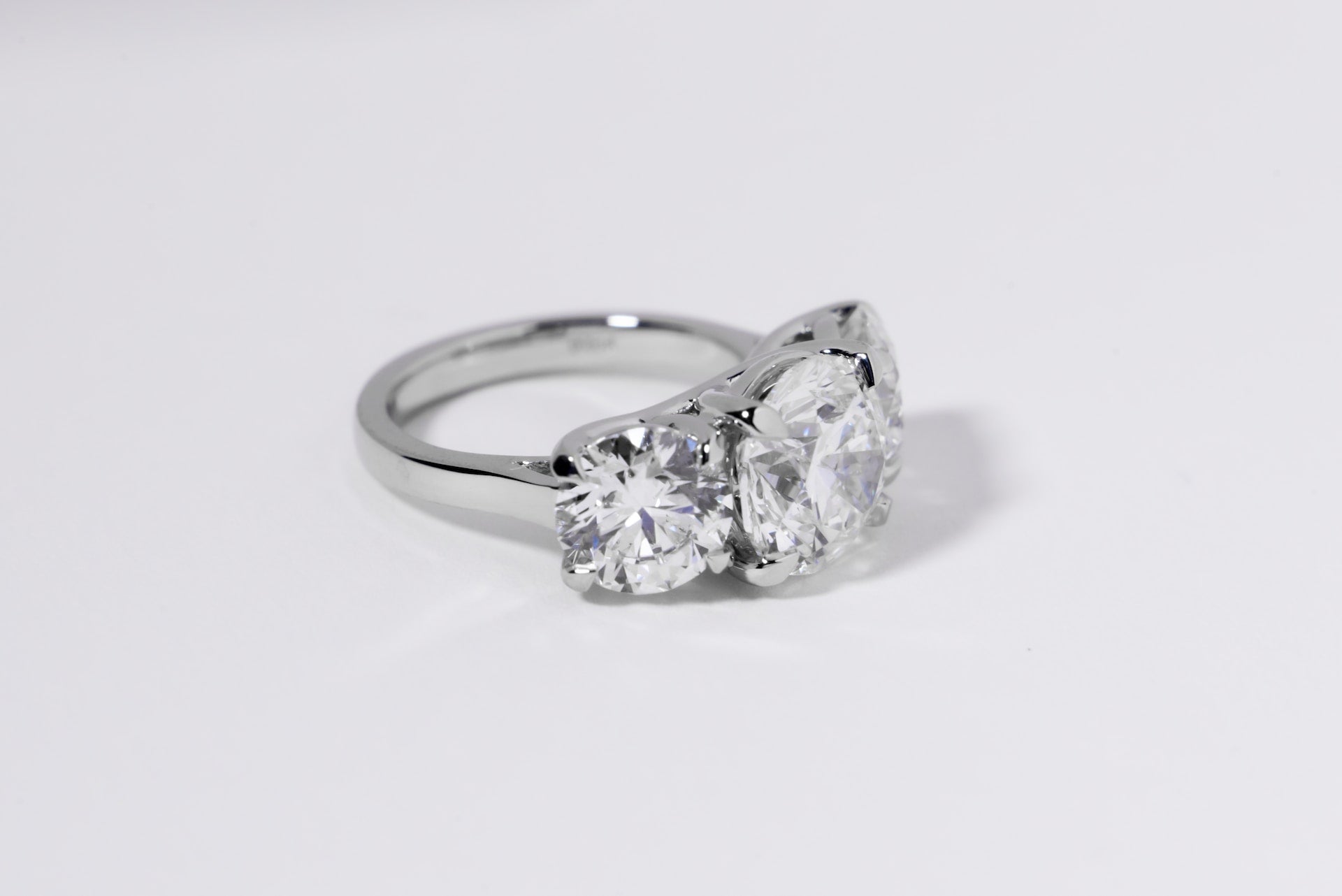Quick Answer:When choosing between 14k and 18k white gold for the setting of your lab diamond ring, consider that 14k has a brighter white color to maximize diamond sparkle. At the same time, 18k offers a subtle, warm undertone to enhance the diamond color. Fourteen karats are typically more durable for daily wear and budget-friendly, while 18k provides a luxurious look. Fourteen karat suits delicate vintage or minimalist modern ring designs well. Eighteen karat will feel slightly heavier.
There is no definitively superior option between 14k and 18k. Focus on selecting a trusted, quality jeweler to expertly craft a secure setting showcasing your lab diamond's maximum brilliance based on your priorities for color, budget, style, and wearing habits.
Introduction
Lab-grown diamonds have revolutionized the jewelry industry, offering ethical, affordable diamond rings that are physically and chemically identical to their mined counterparts. With lab diamonds more accessible than ever, the focus turns to finding the optimal ring setting to showcase their perfection. Two popular choices are 14k and 18k white gold. But what's the difference, and which is best for your lab-grown diamond ring?
14k and 18k represent gold purity levels, with 18k being higher at 75% pure gold compared to 58% for 14k. The remaining percentage consists of silver, nickel, and copper alloys that add strength and color. This alloy variation underpins the key distinctions between 14k and 18k white gold for diamond rings.
White Gold Alloy Composition
The higher gold content of 75% pure gold in 18k white gold gives it a slightly warmer, richer yellow undertone, an important consideration for complementing diamonds with faint yellow tints and enhancing their colorlessness and richness. In comparison, 14k white gold contains more silver and copper in its alloy blend, resulting in a brighter, crisper white appearance that can help accentuate the sparkle of diamonds. There is no right or wrong choice, just personal preference between the subtler warm undertone 18k and the icier white look 14k.

Durability and Strength
With its higher gold content, 18k white gold is denser yet softer than 14k. The softness makes 18k ideal for secured prong settings that can protect diamonds, but it also makes 18k more prone to wear and tear in the form of dents, scratches, and bending from daily use over time. In contrast, 14k white gold has additional metals like nickel and zinc added to the alloy, reinforcing it, providing more durability for everyday wear, and making it better able to resist potential damage. Since diamonds need a durable protective setting, this characteristic favors 14k white gold.
Care and Maintenance
To maintain their bright white luster over time, 14k and 18k white gold require occasional replating with a thin layer of rhodium. This re-whitens the metal as it naturally oxidizes and takes on a pale yellow tone with wear. Because it is harder, 14k white gold can better retain the rhodium coating for longer periods before needing to be re-dipped and replated. The higher gold content in 18k white gold causes it to patina faster, exposing the natural warmer vintage white tone more quickly as the rhodium plating wears off, which some people enjoy aesthetically. Additionally, getting more tips about cleaning white gold to keep it aesthetically is advisable.

Cost Implications
Due to its higher gold purity, 18k white gold costs approximately 1.5 to 2 times more per ounce than 14k white gold, which also factors into higher overall pricing for finished jewelry pieces containing 18k. In contrast, 14k white gold offers a more budget-friendly white gold alternative alongside platinum. When paired with an affordable lab-grown diamond as a center stone, 14k white gold can help keep the total cost of an engagement ring or other jewelry piece in a more attainable price range for many consumers.
Style Preferences
The different metals have distinct aesthetic impacts for diamond rings and other jewelry. Eighteen karat white gold has a rich, luxurious, decadent look that suits important high-end jewelry like engagement rings or anniversary bands. Meanwhile, 14k white gold has a crisper, brighter white shine that often excels in more delicate vintage-inspired designs. Ultimately, personal style preferences should dictate whether 18k or 14k white gold is ideal.
Discover more: Lab Grown Diamond Rings: The New Must-Have For Daily Sparkle & Durability.

Which Is Better for Lab Diamond Rings?
For the most secure protective setting, 18k white gold may be technically recommended for softer lab-created diamonds that need added durability. However, for jewelry that will be worn daily for many decades, 14k white gold may be preferable to prevent long-term ring damage like abrasions or deforming of the band. Each metal has pros and cons depending on an individual's ring-wearing habits and preferences. The final decision can also consider the diamond's color, with near-colorless diamonds potentially showing more warmth from the 18k white gold undertones.
Conclusion
Lab-grown diamonds are a tabula rasa ready to shine in any ring style. Ultimately, personal preference for color, durability, and budget should determine if 14k or 18k white gold best suits your style. There is no universally superior option as long as the setting provides security to safely display the diamond's perfection. Most importantly, select a high-quality ring from a reputable jeweler that securely displays your diamond's brilliance. With a smart ring and metal selections, your ethical lab diamond will forever sparkle.
FAQs about 14k&18k White Gold
Q1: Does 18k white gold feel heavier?
A1: Yes, 18k is denser due to higher gold content, so a ring in 18k will have a slightly more weighty feel than the same design in 14k.
Q2: Should I avoid rings that aren't 18k gold?
A2: Not necessarily - 14k makes very durable rings, and the lower gold content helps keep costs down. Personal preference and lifestyle should determine the karat.
Q3: Does the gold content affect the diamond's sparkle?
A3: Not directly, but 14k's brighter white color can make the diamond appear whiter and crisper, enhancing sparkle. 18k's warmth can accentuate warm diamond hints.


Leave a comment